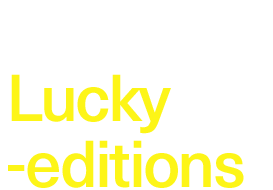About KIFI (Kirsten Dufour & Finn Thybo Andersen

About Kirsten Dufour & Finn Thybo Andersen
From the beginning of their artistic career, Kirsten Dufour & Finn Thybo Andersen has worked to broaden the concept of art, based on a social commitment and a desire for art to be for everyone. This is why their work is often done in collaboration with others, as when they where part of the “Kanonklubben” in the 1960s, Kanonklubben was a free professorless group on the Danish Art Academy in Copenhagen that experimented with happenings, group-based practices and situational art. At the same time, Thybo Andersen was part of the group “Plagiatdrengene”, formed by Poul Gernes.This groupproduced, among other things, the work 31 pictures in 2 variations, which was performed at Fiol Teatret. It was tableau theatre, in which Gernes and Thybo were the wild men in the armoury.
In 1970, Thybo Andersen, and Kirsten Dufour, decided to leave the art world and the art institution as a consequence of the issue of: Life versus Art, and instead create a Solidarity Group which provided materials for fighting Liberation Movements in Africa.
They organised collections of clothes and money, organised flea markets and provided relevant material for developing countries, only to return to the art scene in 1991 This project is today included in their artistic contributions
With this starting point, Kirsten Dufour & Finn ThyboAndersen has worked investigatively with an expanded concept of work.
In 2001 they cofounded YNKB, Ydre Nørrebros Kunst- og Kultur Bureau together with Åsa Sonjasdotter and Gillian Grantsan, an art group based in Nørrebro. YNKB works to relocate artistic activity to the local environment, with interpersonal relationships and dialogical projects.
Kirsten Dufour & Finn Thybo Andersen’s great commitment has thus played a central role in many projects, including the preservation of Astrid Noach’s studio in Rådmandsgade in Nørrebro and the establishment of the ANA Association, as well as the Nørrekær Biennale and Land.
Another example is the “People’s Museum” an art-cultural-historical museum in the town of Birziet 20 km from Ramallah in the occupied West Bank, which serves as a platform where Palestinians could tell their own stories and contribute to anchoring Palestinian identity.
